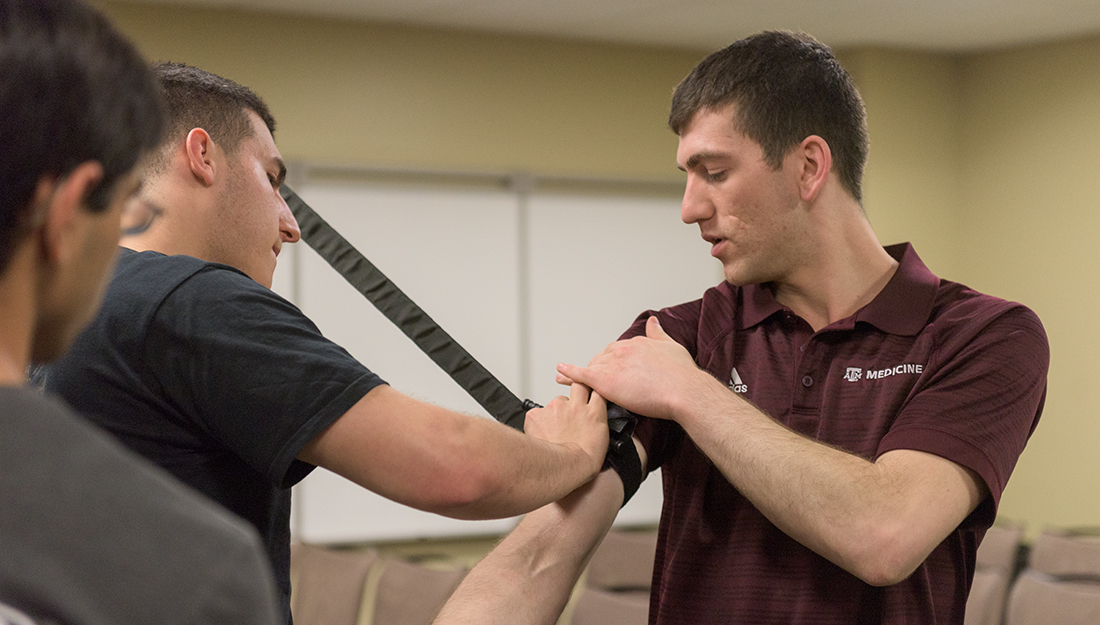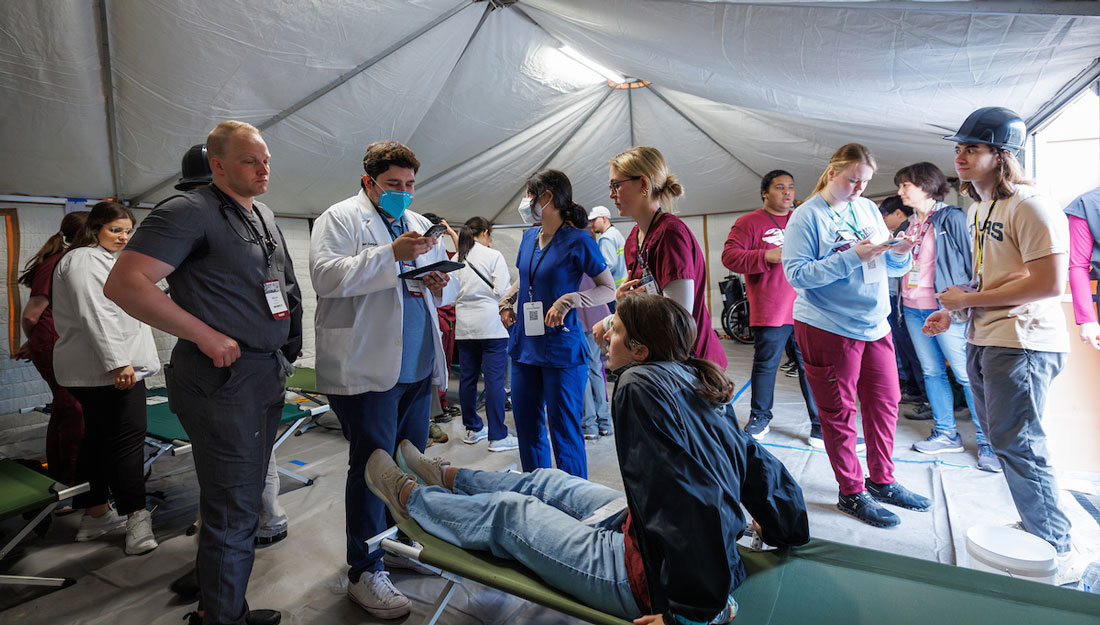- Dominic Hernandez
- Community, Medicine, Show on VR homepage
Medical students teach bleeding control techniques
College of Medicine students lead local campaign to reduce preventable trauma-related deaths

Trauma is the leading cause of death for Americans under 46, according to the National Academy of Sciences, and a person who is bleeding can die from blood loss within five minutes. With this in mind, the Department of Homeland Security (DHS)launched the Stop the Bleed campaign in 2015. Stop the Bleed is a national grassroots effort to train, equip and empower bystanders to help in a bleeding emergency before professional help arrives.
In order to bring more awareness to the Stop the Bleed campaign, Texas A&M College of Medicine student and former Army Ranger, Andrew Fisher along with seven veterans started National Stop the Bleed Day. Kenneth Livingston, a first-year student at the Texas A&M College of Medicine, led the Stop the Bleed effort for National Stop the Bleed Day at Texas A&M.
Together, these students led Stop the Bleed demonstrations at the Memorial Student Center (MSC) at Texas A&M University, as well as across the Bryan-College Station area. The demonstrations showed participants the basics of bleeding control and gave them opportunities to practice techniques, such as applying pressure and using a tourniquet.
“Bleeding control is similar to CPR in that is has life-saving potential, and you never know when it will be needed,” Livingston said. “Anybody who is capable and willing, to learn CPR should also learn bleeding control techniques because those techniques are just as important.”
Some of these techniques can be life-saving, as blood loss can be fatal before paramedics—who take six to eight minutes on average to arrive—can get to the patient. According to the Stop the Bleed campaign, of the 147,000 trauma-related deaths in 2014, roughly 20 percent could have been prevented with proper hemorrhaging control techniques.
“We want to teach bystanders the skills they need in an emergency,” said Fisher, a Texas A&M College of Medicine student and 2018 Army Hero of Military Medicine honoree. “The earlier we can get emergency control of the bleeding, we’re less likely to see the mortality associated with massive blood loss.”
Some of the skills taught were how, and when, to apply a tourniquet, how to compress and dress a wound and how to identify the most serious injuries on a victim. Instructors were adamant, though, that these techniques were only mitigation methods until EMTs arrived, so the number one rule remains to always call for emergency medical personnel.
These types of skills can be applied in a variety of crucial situations, as these injuries aren’t just limited to war zones, mass shootings or other acts of violence. Trauma-related injuries can include automobile accidents, work-related injuries or just accidents in the home, and being the nearest person to the injury is a great opportunity to help.
“It can be stressful, but we want to teach the skills that can help manage the situation until the proper help arrives,” Livingston said. “If it takes 10 minutes for emergency help to arrive, it may already be too late, and just the basic understanding of bleeding control can help save somebody’s life.”
Media contact: media@tamu.edu


